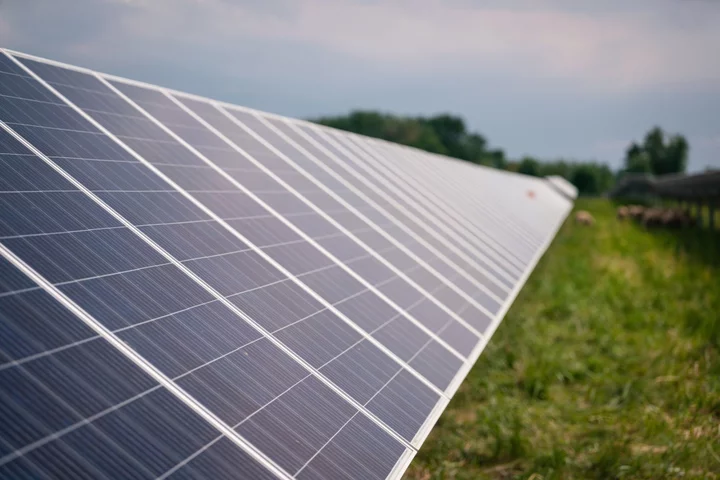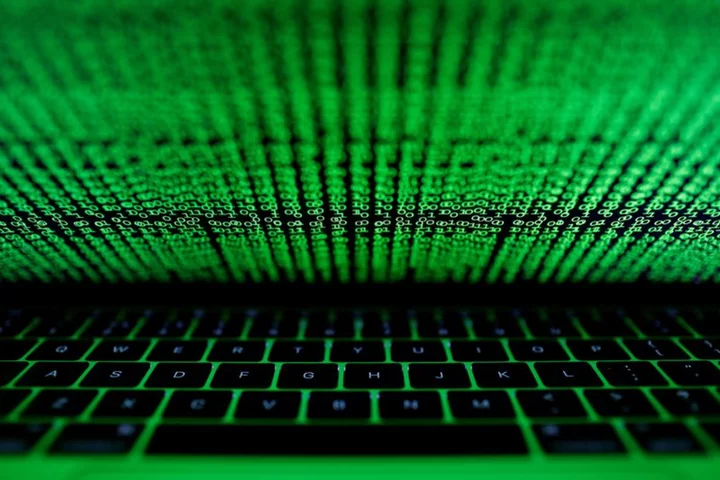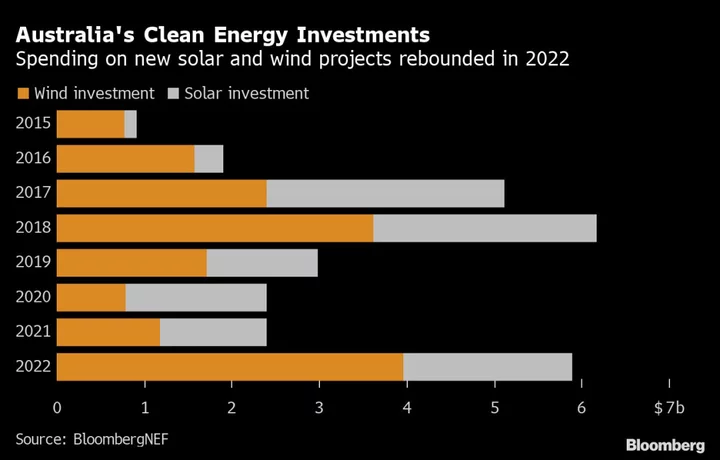
Biden to Announce $60 Million Enphase Energy Investment
President Joe Biden will announce a $60 million investment from Enphase Energy Inc., a manufacturer of solar-energy equipment,
2023-07-06 08:16

Google to unveil AI tools for corporate Gmail customers for $30 a month - WSJ
Alphabet-owned Google is planning to make its suite of artificial intelligence-powered tools available to corporate Gmail accounts at
2023-08-29 20:15

Leading Crypto Teams and Institutional Investors Team Up to Launch a $50M Cross-Chain Ecosystem Fund Powered by Wormhole
MIAMI--(BUSINESS WIRE)--May 18, 2023--
2023-05-18 20:25

Pelosi Says AI ‘Double-Edged Sword’ Needs Regulation
Former US House Speaker Nancy Pelosi says the fast-advancing artificial intelligence field needs regulatory guardrails that include protection
2023-09-01 05:51

YouTube 'reckless' to stop policing false claims on election fraud -Biden campaign
By Trevor Hunnicutt WASHINGTON (Reuters) -U.S. President Joe Biden's re-election campaign said on Tuesday that a decision by Alphabet Inc's
2023-06-07 07:59

Senegalese government websites hit with cyberattack
DAKAR A group of hackers called Mysterious Team made multiple Senegalese government websites go offline overnight on Friday
2023-05-28 01:24

Outlook down: Microsoft 365 not working, leaving people without email and other apps
Microsoft 365 has gone down, leaving people without access to their email in the middle of the working day. The company said it was aware of the issue and working to fix it. Shortly after, it was back online, according to both tracking website Down Detector.
2023-06-06 01:18

Solar panel world record smashed with ‘miracle material’
Researchers have made a breakthrough with a so-called miracle material to break the efficiency record for solar panel electricity generation. A team from the Chinese solar technology firm Longi set a new world record of 33.9 per cent for a silicon-perovskite tandem solar cell, breaking the previous record set in May this year by King Abdullah University of Science & Technology (KAUST) in Saudi Arabia. The new efficiency record also broke the theoretical limit of 33.7 per cent for the first time of standard single junction cells, which are found in commercial solar panels. “This provides meaningful empirical data to demonstrate the advantage of crystalline silicon-perovskite tandem solar cells over crystalline silicon single junction solar cells in terms of efficiency,” the company noted in a statement. “The emergence of crystalline silicon-perovskite tandem technology has opened up a new track for the development of next-generation high-efficiency solar cell technology. This means that the same area, absorbing the same light, can emit more electricity.” The theoretical efficiency limit of silicon-perovskite tandem solar cells is 43 per cent, however this level is unlikely to ever be realised on a commercial scale. The first production of ultra-efficient perovskite solar panels could begin in China, with researchers from Nanjing University saying earlier this year that a design breakthrough has made mass production possible. According to the researchers, the next-generation panels will be 50 per cent cheaper and 50 per cent more efficient than traditional silicon cells, however the efficiency rates will still be a long way off the levels achieved in the lab. UK startup Oxford PV, which is a spin-out from the University of Oxford, is already in the process of commercialising the technology, with hopes of beginning full-scale production at a German facility later this year. “Current silicon solar panels have reached their physical limits. We’ve got a way to transform the efficiency of these solar cells with perovskite,” Chris Case, Oxford PV’s chief technology officer, told The Independent in August. “The biggest challenge by far is durability and reliability. We already have great efficiency – much greater than current silicon cells – so most of our research and development is spent enhancing reliability, not efficiency.” Perovskite has been hailed as a “miracle material” for its potential to revolutionise everything from high-speed telecommunications to renewable energy technologies. Its potential for solar panels is not limited to the efficiency gains compared to traditional silicon cells, but also new ways of using them. Recent breakthroughs include self-healing solar panels that can maintain their efficiency for tens to hundreds of years, as well as double-sided solar panels capable of generating electricity from the Sun’s energy on both sides. The material could also be used in applications ranging from building-integrated solar panels to space-based electricity generation. Read More How tech could turn our homes into renewable energy power stations Hundreds of years after it was discovered, one material is about to change the world Millions could abandon electrical grid with new solar panel advance Millions of Australians left without mobile and internet network after Optus outage Guidance urges parents not to buy smartphones for primary school children
2023-11-08 19:23

YouTube is testing a new search feature powered by humming
If you have a song stuck in your head and just can't remember the words,
2023-08-25 00:22

Innovative New Tool Empowers Unprecedented Health Plan Efficiency
BURLINGTON, Mass.--(BUSINESS WIRE)--Aug 22, 2023--
2023-08-22 20:29

These Stocks Are Moving the Most Today: Workday, Las Vegas Sands, Fluence Energy, NetApp, Jabil, and More
Workday raises its fiscal-year forecast for subscription revenue, Las Vegas Sands discloses that Miriam Adelson, the casino company's largest shareholder, has sold $2 billion of stock, and Fluence Energy surges after reporting a surprise quarterly profit.
2023-11-29 17:55

Rimini Street Advises that Oracle Database Licensees Using Releases Less Than 19c Not Receiving Oracle Premier Support, Despite Paying Full, Expensive Oracle Maintenance Fees
LAS VEGAS--(BUSINESS WIRE)--Jun 22, 2023--
2023-06-23 01:22
You Might Like...

Sunak Seeks Biden’s Backing on AI After UK Left Out of Key Talks

Australia Sees Power Gaps Over Next Decade as 62% of Coal Operations Shut Down

ThetaRay Earns Microsoft Cloud Solution Provider Status

Dream plays 'start, bench or cut' about Kai Cenat, xQc and Adin Ross: 'Reason why Kick is not kicking Twitch's a**'

Colorado students at private career school that lost accreditation get federal loan relief

European gamers prepare for World Championships at Nintendo Live

ChatGPT vs Bing vs Bard: You can pick the best in this chatbot arena

Tesla shouldn't call driving system Autopilot because humans are still in control, Buttigieg says
